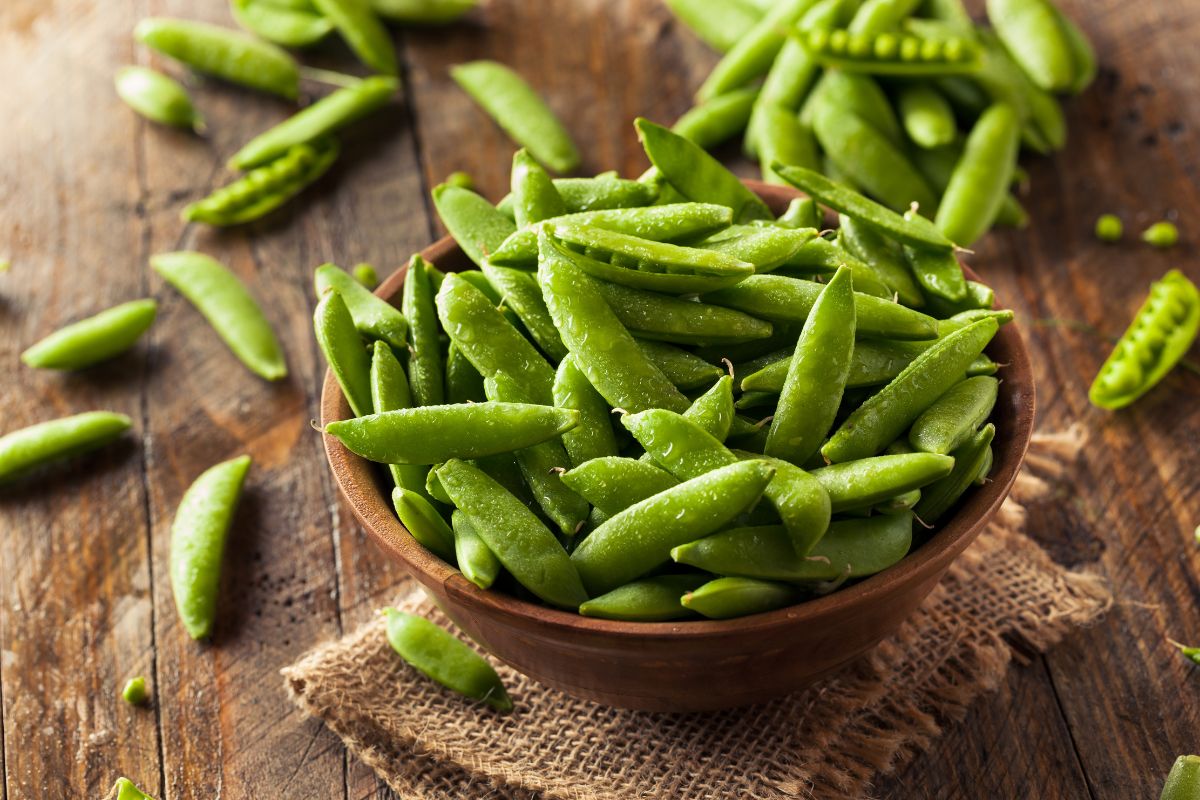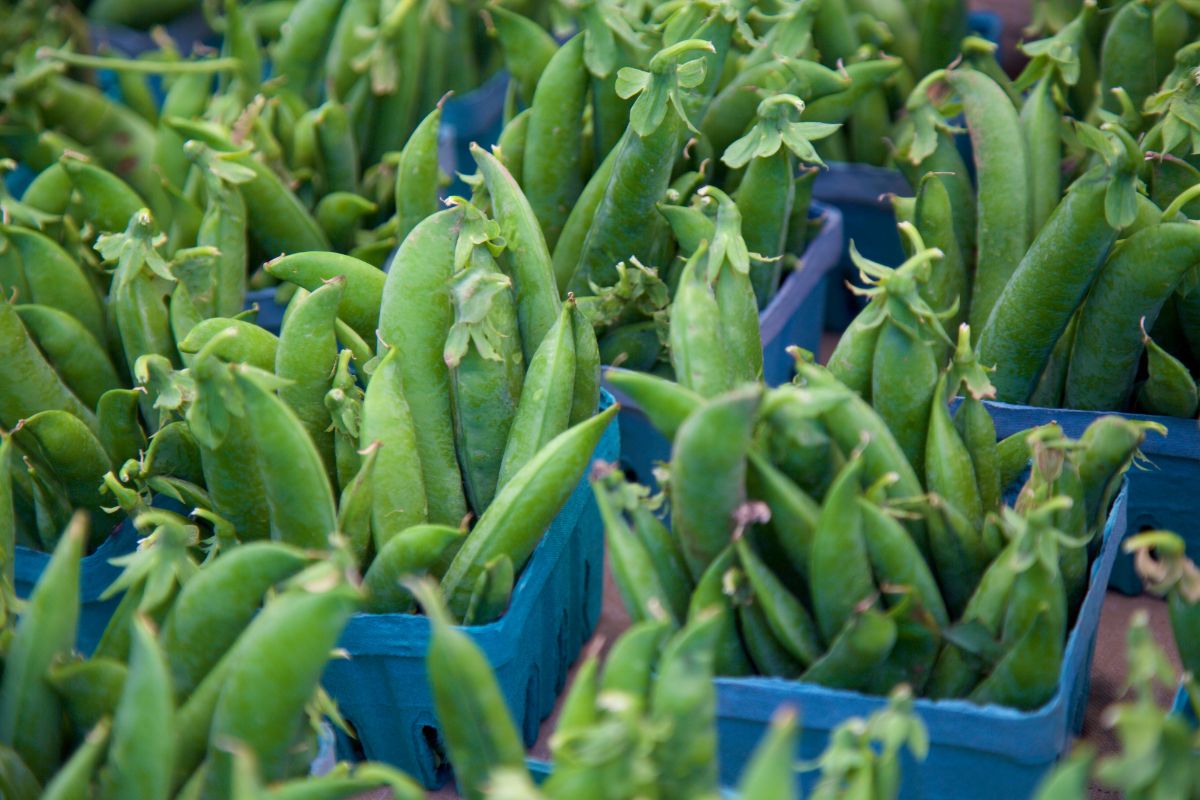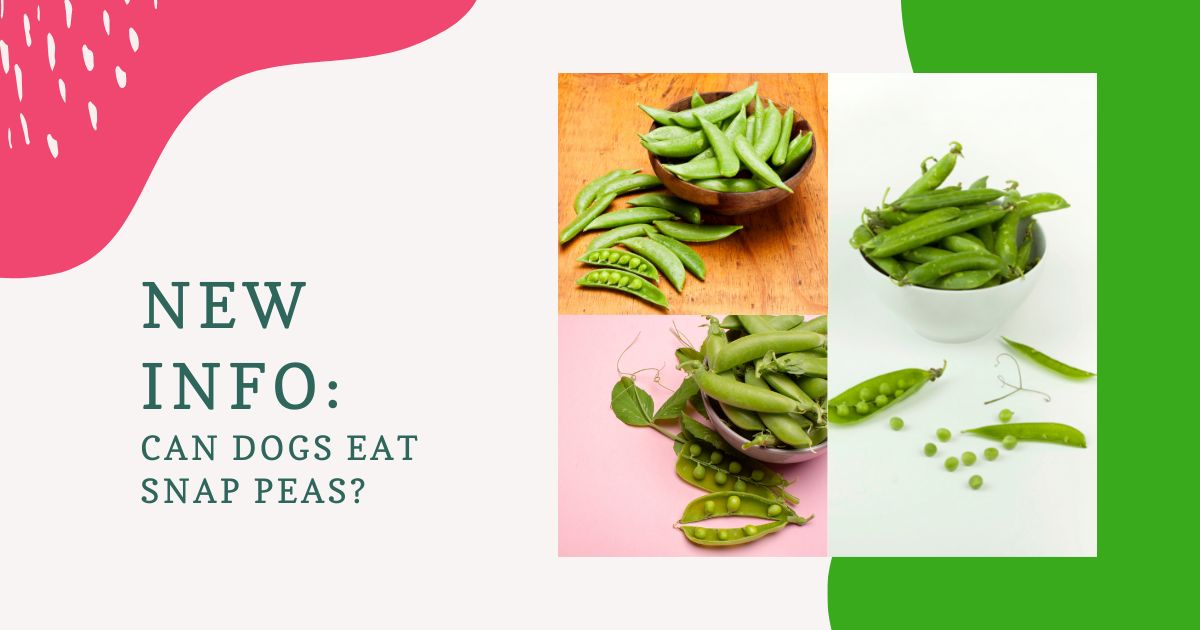What are Snap Peas?
Can dogs eat snap peas? This article will answer your questions about snap peas and dogs. In contrast to snow pea pods, which are flat with thin walls, the snap pea, also known as the sugar snap pea, is an edible-pod pea with rounder pods and thick pod walls.
Many hybridize snow and garden peas to create sugar snap peas. Snow peas have smaller, immature peas. Sugar snap peas are typically sweeter and tastier.

Can Dogs Eat Snap Peas?
Many people wonder, can puppies eat peas, and can dogs have snap peas? Peas frequently serve as a base for many human cuisines, including side dishes. What sort of peas can dogs eat? Snap peas are safe for dogs to eat. They can eat any pea, not just snap peas.
You shouldn’t believe what we say. You should consult your veterinarian before giving your dog peas or other new food additives. Here are some things you should know about snap peas as dog treats in the interim.
Are Peas Bad for Dogs?
Fresh peas from the garden or farmer’s market are best in the spring. The question is, are snap peas good for dogs? Peas are neither hazardous nor dangerous to dogs, keeping in mind that fruits and vegetables are not essential to a dog’s diet and should be an occasional treat.
Peas are frequently a component of commercial dog foods, but research on their potential connection to canine cardiac disease is still in progress. Specifically, we’re discussing garden or English peas, snow peas, and sugar snap peas.
But you need to ask yourself some key questions, can dogs have canned peas, and can dogs eat frozen peas? Fresh, frozen, or thawed peas are acceptable for your dog; however, canned peas are not. Canned peas often contain a lot of salt, which is bad for dogs. Such peas are similar to several canned vegetable types, which are also bad for dogs and humans.
As a general rule, if people can eat a pea pod, your dog can also. Of course, you must always shell garden peas. However, use caution when handling pods since they can become lodged in your dog’s throat and result in choking. Watch for negative responses, including diarrhea or vomiting, as with any new food.
Peas contain vitamins such as vitamins A, K, and B. They are rich in minerals like magnesium, potassium, iron, and zinc. They are also high in fiber and protein, which is why they are frequently present in commercial dog foods. Lutein is an antioxidant beneficial for skin, heart, and eye health in peas.
Peas can, of course, have disadvantages, just like any meal for humans. Give these to pets without kidney issues alone. Purines are a naturally occurring chemical component in several foods and beverages, including peas. The kidneys filter uric acid produced by purines. Renal stones and other kidney disorders can result from having too much uric acid in the body.
Dogs don’t require the same amount of fruits and vegetables as humans. When meat supplies are scarce, they eat vegetation because they are carnivorous in the wild. Peas are a low-calorie option for your dog as an infrequent snack or treat. So that you can both enjoy them while they’re tasty and plentiful.

The Different Types of Snap Peas
Peas are a such wonderful food to produce. They are one of the earliest crops to mature in the spring, and you can use them in all kinds of meals. You may eat them right off the vine as a snack in the garden. And since they are legumes, they are as excellent for the soil as they are for people.
Peas are easy enough to raise. The most challenging element of growing peas is deciding what kind you want to grow. There are mainly three sorts of peas: English peas, snow peas, and sugar snap peas.
Each goes by numerous names, making the option all the more complicated. But if you get the differences obvious, you should cultivate some of each. Here are the three primary types of peas to plant in your yard.
English Peas (Pisum Sativum, Var. Sativum)
The pods of English peas are not edible; you must wait until they get fully inflated before shelling and eating them. One of the pea varieties with the quickest maturation times is the shelling variety; the smaller, bushier types are ready in about 50 days. Consider planting “Green Arrow,” “Maestro,” “Lincoln,” and “Tall Telephone” varieties.
USDA growing zones: 2 to 9
Sun exposure: Full to partial sun
Soil needs: Loamy
Snow Peas (Pisum Sativum Var. Saccharatum)
You can harvest the flat edible pods of snow peas, also known as Chinese pea pods before the seeds develop fully. Snow peas often take the most days to mature of all the peas, especially the tall variety, even though you do not need to wait for the peas inside to swell. Consider planting the following varieties: “Oregon Giant,” “Golden Sweet,” “Mammoth Melting Sugar,” and “Oregon Sugar Pod.”
USDA growing zones: 2 to 9
Sun exposure: Full to partial sun
Soil needs: Drier, enriched soil
Sugar Snap Peas (Pisum Sativum var. Marcrocarpon)
English peas and snow peas are the parents of sugar snap peas. Similar to English peas, the seeds can get a little plumper. On the other hand, the pods are edible and crisp, so they don’t need shelling, and you may use them in dishes like snow peas.
English peas are grown similarly to sugar snap peas; however, when the weather heats up, sugar snap peas tend to stay a little longer. Consider planting “Cascadia,” “Sugar Ann,” “Sugar Daddy,” and “Super Sugar Snap.”
USDA growing zones: 3 to 11
Sun exposure: Full to partial sun
Soil needs: Well-drained loamy soil
How to Serve Sugar Snap Peas to Dogs
Can dogs eat sugar snap peas? The answer is yes. Dogs can eat sugar snap peas in the following forms:
- Freshly cleaned from the garden. Just give your dog a couple of treats at a time.
- Cooked as a component of a home-cooked meal that contains a good source of protein and is well-balanced.
- Sliced into bite-sized pieces and sprinkled as a garnish on your dog’s food.
How Can I Safely Give Snap Peas to My Dog?
You may wonder, can dogs eat sweet peas? How safely can I give snap peas to my dog? Peas are generally simple to serve safely. Technically, you don’t need to shell them before giving them to your dog. Pea pods might be difficult for some dogs to digest. The pods are completely non-toxic except for this.
Your dog’s kidneys should be your top priority regarding safety. Snap peas, or any form of a pea, are not a good choice if your dog has kidney problems already. Purines are a type of naturally occurring chemical substance found in peas. This substance produces uric acid, and both people’s and dogs’ kidneys normally filter it.
The ability of the kidneys to effectively filter out uric acid is ineffective when there are kidney problems, which can result in a harmful buildup of the acid and eventually cause kidney stones and other kidney-related disorders.
Furthermore, giving your dog canned peas is a horrible idea. They have excessive levels of artificial preservatives and sodium that harm your dog. Peas can be an extraordinarily healthy addition to your dog’s diet, except for these few restrictions.

The Final Say
Peas are safe for dogs to eat; however, it’s best to avoid the pods because they can provide a choking risk. Give your dog a few peas the first time you offer them and observe their reaction. Remember that every dog is unique, so don’t worry if they spit them back out if they don’t like the flavor or texture.
Try using peas as nutritious training rewards if your dog enjoys the flavor. Although they don’t have a particularly strong smell and may not be ideal for attracting your pet’s interest, their tiny size and low-calorie content make them an advantageous option.
When giving your dog peas, always remember to abide by the 10% rule and ensure that treats only make up 10% of their caloric intake, with the remainder coming from a comprehensive and balanced diet. You are now aware that dogs can eat peas. Read our article and find out Can Dogs Eat Chickpeas?

